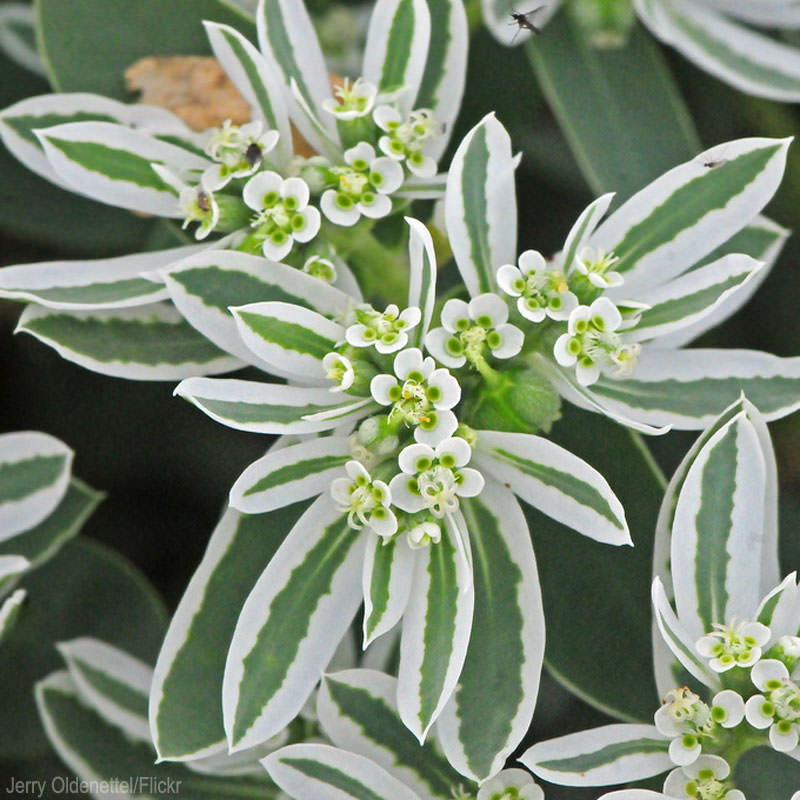
Like many gardeners, I’m always seeking ways to cut down on the amount of time I spend planting and maintaining my gardens. Yes, there will always be weeding and watering chores, but one of the ways I’ve managed to lighten my work load is to plant lots and lots of self-sowing annuals in my perennial borders and vegetable garden. As a group, these workhorse plants need very little care, replant themselves, seldom require deadheading and are dirt cheap. Plus, most of them provide color and interest to the garden for months on end.
Here are a few of my favorite self-sowing annuals.
1. Flowering Tobacco (Nicotiana alata)
 Courtesy Susy Morris/Flickr |
Flowering tobacco is a deliciously fragranced plant, especially in the evening when the scent is released to lure pollinators. This species grows much taller than its hybrid bedding plant counterparts yet seldom requires staking and has blooms of white, pink, fuchsia, lavender or purple.
2. Love-In-A-Mist (Nigella damascene)
 Courtesy Susy Morris/Flickr |
With one of the plant world’s most lovely common names, love-in-a-mist is also a lovely flower. Finely divided, thread-like foliage is topped with bunches of flowers in shades of white and blue. Another added bonus are Nigella’s interesting seed pods. The round, striped capsule is commonly used in dried flower arrangements and is filled with numerous dark-black seeds.
3. Love-Lies-Bleeding (Amaranth caudatis)
 Courtesy Susy Morris/Flickr |
Love-lies-bleeding is a perfect plant for your gardening self esteem. You plant a teeny-tiny seed and in a few short months it grows into a 6-foot-tall plant dripping with cascades of pinkish-red tassels. Once very popular in Victorian and Colonial gardens, love-lies-bleeding is staging a comeback and for all the right reasons.
4. Vervain (Verbena bonariensis)
 Courtesy Susy Morris/Flickr |
Very attractive to bees and butterflies, purple-top vervain is almost skeletal in its growth. Three- to 4-foot-tall wiry stems are topped with flat-headed purple blooms. This plant does very nicely in hot, dry areas but can throw a lot of seeds, making it potentially invasive if not regularly deadheaded. It’s a great addition to the back of a perennial border.
5. Snow-On-The-Mountain (Euphorbia marginata)
 Courtesy Susy Morris/Flickr |
A relative of the poinsettia, snow-on-the-mountain is one of the most unique self-sowing annuals out there. It’s smooth, gray-green foliage stands 2 to 3 feet tall and is impressive just as it is, but just like a poinsettia, snow-on-the-mountain’s main show is the result of colored bracts (or modified leaves). These bracts are bluish-gray and trimmed with a sparkling-white
6. Floss Flower (Ageratum houstonianum)
 Courtesy Susy Morris/Flickr |
Kin of those short, blue puffball varieties, this plant is a personal favorite. Growing up to 24 inches tall and smothered in blue, white or pink fluffy flowers, floss flower is a reliable self-sower. It’s tolerant of drought and continues to bloom right up until frost.
7. Laceflower (Ammi majus)
 Courtesy Susy Morris/Flickr |
This self-sowing annual and its close cousin thimbleweed (Ammi visnaga) are staples in my garden. Their white flowers look very much like the blooms of Queen Anne’s lace and are produced prolifically on 3-foot-tall stems. I love to cut them and use them in bouquets in the house.
Seeds of these, and many other self-sowing annuals, can be purchased at your local nursery as well as from online sources including Select Seeds and Heirloom Seeds.
Get more gardening tips from Jessica:
- 4 Tips to Keep Your Garden Producing Into Fall
- <5 Reasons to Let White Clover Grow In Your Lawn
- 4 Things You Didn’t Know About Poison Ivy
- 7 Vertical Gardening Techniques for Healthier Veggies
- <5 Reasons to Let White Clover Grow In Your Lawn
« More Dirt on Gardening »




